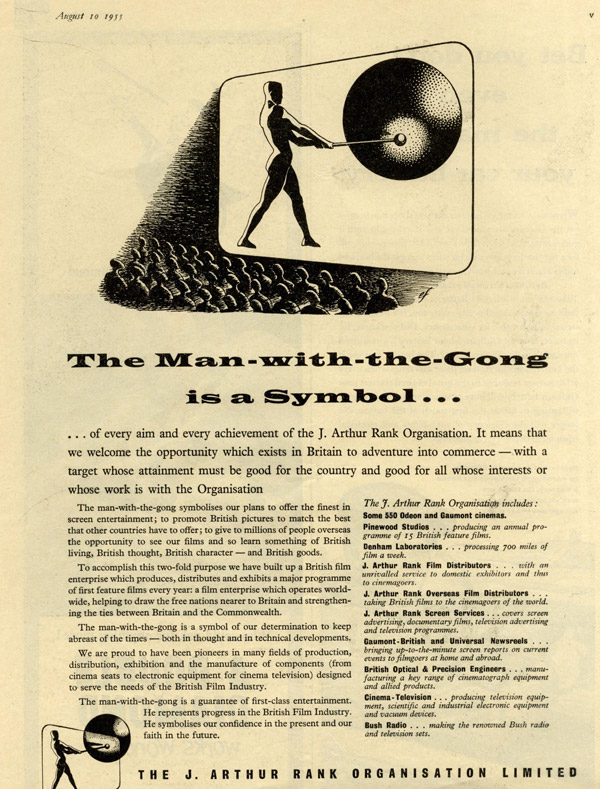MAIN MENU
EXPLORE BY THEME
EXPLORE BY TYPE
EXPLORE BY CINEMA
J. Arthur Rank and Children’s Entertainment Films
Children’s Entertainment Films 1947 – 1950 and The Children’s Film Foundation 1951 -1987
In the early days of cinema films for children would often be of American origin and sometimes just be adult films which had been edited until British films especially made for the child audience came along.
Concerns about the effects that the popularity of film was having on children had been raised by educationalists, the church and the press. Several reports and research surveys had looked into this area, one of the most notable being the Wheare Report in 1950.
J Arthur Rank who was a devout member of the methodist church and was also a Sunday School teacher, he found showing the students religious films would get messages across just as well as lecturing, this practice was extended to other Sunday schools and led to the formation of The Religious Film Society. His father was a millionaire flour mill owner and he had been brought up with strict moral codes.
His intrests led him into film production and he helped to form British National Film with the first commercial film in 1935 called ‘Tom’s Ride’. Rank wanted films to tell a moral story as well as be entertaining for the children and families. He found wide distribution of the film to be difficult due to ties with British distributors and Hollywood. As a solution bought and controlled some of the means of film production, distribution and exhibition.
He became head of the Gaumont and Odeon cinema chains and had interests in both Lime Grove and Pinewood Film Studios and wanted British made films and serials for the children’s cinema matinee programs.
He continued making films in this vein under Ranks’s Gaumont British Instructional Division, heralding the start of British made films especially for a children’s cinema matinee audience. They continued making films for Rank cinemas and became known as the Children’s Film Department and from 1947 became The CEF – Children’s Entertainment Films.
Film making is a costly business and when the Rank Organisation could not sustain funding the CEF and following publication of the Wheare report in 1950, which looked at the effect of juvinile cinem going and the influence of films, a collaboration within the British Film Industry was formed and supported by the Rank organisation – The Children’s Film Foundation -{CFF} was formed. The CFF had a remit to create films especially for children’s cinema matinees and suitable for showing within schools.
The funding for this was supported by the Eady Levy, a tax put onto cinema tickets. This continued for over 50 years until 1985 when the levy was abolished.
In the 1960’s the decline of the Children’s Film Foundation mirrored what was happening in cinemas all over the country. The 60’s brought about changes in society and the way in which people in society viewed things. Increased choice in places for entertainment and activities, changes in attitudes and the increase in ownership of televisions as well as increased choice oF television programmes, were factors which contributed to a decline in cinema admissions. Many cinemas had already closed by this point and the decrease in venues and sales continued. Children didn’t have to “Come Along” to the cinema on a Saturday morning for their entertainment, instead they had Saturday Morning Television.
Due to funding restraints and the decrease in Children’s cinema matinees in 1982 the CFF became the CFTF {Children’s Film & Television Foundation} and by 1987 the CFTF ended film making and went onto serve as an advisory body for children’s film and television. In 2012 the CFTF once again changed its name to The Children’s Media Foundation with its tag line being
“Ensuring that UK children have the widest choice of quality media”



